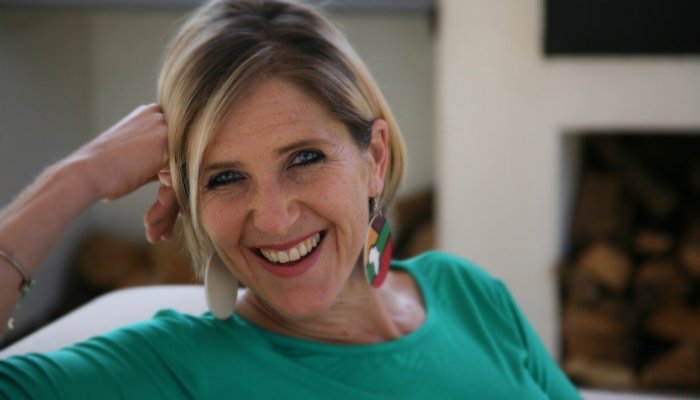Tired eyes blink silently back at him. Sighs are breathed. Tony scratches her head and thinks, “Um…”
We have been missing a key step in the innovation game
Being called upon to come up with innovative ideas in the middle of a working day can be like dashing into a running race with no training and no warmup. Have you ever seen a dad pull a hamstring at the parents’ ‘fun race’ at school athletics? It’s the same principle. Insufficient training meets lack of preparation. Add a competitive streak and some pressure from onlookers, and boom, you could be limping for two weeks.
The same thing is happening with the drive for innovation. The pressure is on to adapt and innovate at speed. Employees are being called upon to create new solutions and reinvent their ways of working. The internet is awash with discussions about open innovation, big data analytics, prototyping, innovation management software, and other innovative practices. But, as important as these practices are, the source and starting point for innovation is creativity.
“Without creativity, there is no innovation.”
Carmela Ward
So, what distinguishes creativity from innovation?
Creativity is largely underdeveloped and misunderstood. The word itself was coined as recently as 1875, and studies of the concept only really kicked off in the late 1950s.
Although there is no one definition for creativity, it is widely acknowledged in business and academic fields that, ‘Creativity is the use of imagination to produce something novel and useful’.
Innovation takes creativity and commercialises it. Thus, a useful definition for innovation coined by Dr. Amy Climer is: ‘Innovation is creativity with economic gain’. Think of innovation as creativity in a suit. Creativity is an essential ingredient in the innovation process but does not, by itself, constitute innovation.
“Of all the gifts we have as humans, the one that stands out, giant-like above all the rest, is our ability to be creative. It is responsible for all the progress we enjoy today.”
Sidney Parnes
Creativity to innovation is like physical fitness to a game of rugb
A helpful analogy, I find, is to think about creativity and innovation in terms of a game of rugby. Creativity is like physical fitness in a game of rugby. Innovation is how you play the game on the field. Innovation is your game plan, your player allocation, and your playbook.
You can have the best coach and the best strategy in the world, but you will not win the game with physically unfit players. The fitness of each player enables them to run and perform the rugby moves you give them. Similarly, the creative fitness of each person in your organisation enables them to observe, think, and contribute to your innovation process.
No rugby coach worth his salt would put a player into a match without the necessary fitness training. Yet, leaders everywhere send their people into the marketplace without the necessary creative intelligence fitness.
“You can’t be a creative thinker if you’re not stimulating your mind, just as you can’t be an Olympic athlete if you don’t train regularly.”
Sir Ken Robinson
Three things you should know about creativity
1. Creativity is personal
Fitness is a personal thing. It involves your body, mind, time, sleep, and what you eat. Though the coach may guide you, it’s up to each player to achieve and maintain peak physical fitness.
In the same way, creativity is a personal thing. So our creative practices should start at home. These involve our morning routines, our exercise regimes (because this affects blood flow to our brains), how we design our work schedule, how we set out our home office, and our relationship with digital media.
If employers want a creatively fit workforce, each person should commit to developing their creativity.
2. Creativity starts with a creative mindset
Creativity begins in our minds. Unfortunately, one of the biggest barriers to creativity is that people do not see themselves as creative. If I don’t believe I have a creative bone in my body, it vastly limits my potential to innovate at work.
“Belief in your creative capacity lies at the heart of innovation.”
Thomas Kelley
At Creativity Wake-Up, we begin our learning experiences by waking people up to the power of their creative intelligence. To do this, we use psychology and business research, neuroscience, history, modern philosophy, and personal experience. We find that a paradigm shift occurs in our minds once we understand that our brains can change, we get new brain matter every day, and we can increase our creative intelligence.
3. There is no quick hack
We love our hacks these days. Everyone is looking for a quick fix. I’m sorry to say there is no quick fix to creativity. Just like getting physically fit requires ongoing work, so, too, developing your creative intelligence requires commitment and effort. However, I can personally attest that it is a pursuit that reaps exponential rewards.
A culture of innovation starts with individual creativity
The Canadian research university, Regina, conducted a global innovation study collecting data from 437 companies across 11 industries in 27 countries. Professor Grant Alexander Wilson concludes that, of all the innovation strategies and tools, the development of an innovation-focused culture is the necessary first step. He says, “We found that highly innovative people were better at implementing all the innovation practices. We also found that, across industries, companies with strong innovation cultures outperformed their counterparts without a similar culture.”
Their number one managerial tip is that all executives should seek to create an innovation-focused culture. Since culture is shaped by the beliefs, values, and behaviours of every individual in the group, an innovation-focused culture will be driven by individual creativity.
So, creativity drives innovation.
How, then, can I develop my creativity? Glad you asked.
First steps to developing your creativity…
Start with the proverbial ‘man in the mirror’
As a leader in your organisation, you should be among the first to work on your own creativity. Assess your leadership impact from a creativity perspective.
Ask yourself:
- How creative am I currently? (Remember, this is not fixed but rather an assessment of your creativity at a point in time.)
- How does my creativity show up in my leadership?
- Am I promoting or squashing creativity in those around me?
- Am I role modelling creative thinking?
- Review your own recent work. What was the most creative moment you had recently, and what made it happen that way?
Take one step in each of the four core competencies for creative expression, as described by Robert Epstein, a senior research psychologist at the American Institute for Behavioural Research and Technology. These core creative competencies are capturing, surrounding, challenging, and broadening.
Capture your ideas intentionally. Start noticing ideas that come to you and be deliberate about making a voice note on your phone, taking a photo, scribbling a note in a special ideas pocket notebook – whatever works for you. The simple activation of your imagination to start noticing these ideas will generate new thoughts and ideas.
Surround yourself with new stimuli. For example, move furniture around your home office, schedule some thinking work at a library or in a garden, set up a coffee meeting with someone very different from you, put up new pictures or quotes to inspire you, get a scent diffuser for your desk, plan a trip to a new place.
“The more interesting and diverse the things and the people around you, the more interesting your own ideas become.”
Robert Epstein
Challenge yourself by setting a goal to solve a problem within a limited time or with limited resources. For example, in a TED talk, Toastmasters world public speaking champion, Verity Price, described how the constraints of the water crisis in Cape Town unleashed huge creativity in her. She went on to develop her creativity further with personal challenges such as achieving outcomes with severe budget restrictions.
Broaden the neural networks in your brain and thus your creativity by learning new things outside your regular scope of life. Read diverse books. Author Ann Morgan set herself the challenge of reading a book from every country in the world in a year. Listen to podcasts. Let your curiosity lead you to try podcasts you’ve never considered before. Invest in a course. Talk to us at Creativity Wake-Up about courses for individuals and teams. Talk to people who you think are very creative. Don’t be shy – often, what makes a great creative is a willingness to share ideas.
In conclusion, there are no shortcuts, and there is no quick ‘hack’, but whatever you do, get started!
“It turns out that creativity isn’t some rare gift to be enjoyed by the lucky few – it’s a natural part of human thinking and behaviour. In too many of us, it gets blocked. But it can be unblocked. And unblocking that creative spark can have far-reaching implications for yourself, your organisation, and your community.”
Tom Kelley
References
“3 ways for businesses to fuel innovation and drive performance” Prof. Grant Alexander Wilson, 17 January 2022, The Conversation Africa, Inc.
“The decade of innovation: from benchmarking to execution” C. Brooke Dobni, Mark Klassen, Journal of Business Strategy, 4 January 2021
Nina Pearse is a speaker, trainer, and coach with a vision to transform business and society by helping people tap into their creativity. As co-founder of Creativity Wake-Up, her purpose is to inspire and equip people to imagine and bring into being creative solutions to life’s challenges and opportunities.






